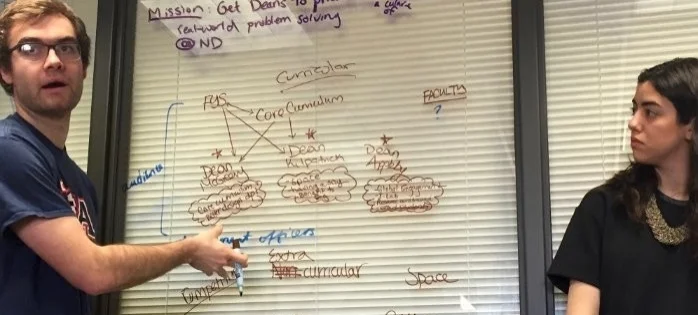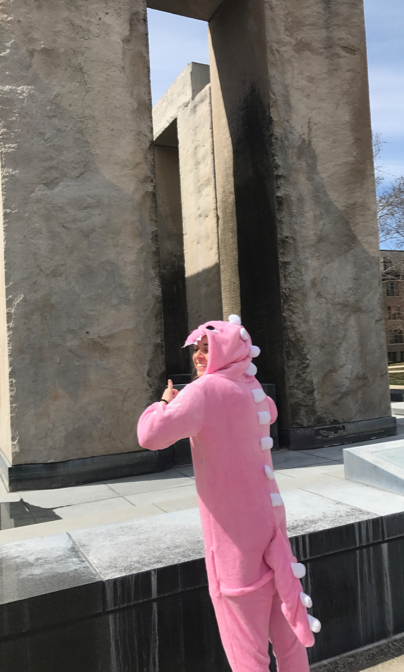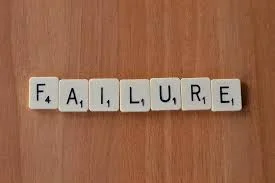You’re smart. You’re motivated. But you don’t want to step on your teammates’ toes. Though you are a group, your mind is thinking of a million and one ways to approach the problem facing your company of thinkers. You tune out what has just been proposed by your teammate. Your mind is close to a breakthrough! No, no. How could you introduce this tangent now? Finally you muster the courage to interrupt. Your team members begin to nod—ooh that’s a neat idea! But we were talking about this other thing. Let’s focus on that for now. As you recede into your chair you experience a mix of agreement and disappointment. Your teammates renew their speaking—you nod as your eyes settle onto that familiar edge of the table.
If you’ve ever worked in a group there’s a good chance you can relate to our imaginary protagonist. You see, all our lives we have been brainstorming problems in teams—from middle school to corporate meetings. Team thinking, or brainstorming, is a valuable way to approach solutions to a complex problem by combining dissimilar knowledge, viewpoints and experiences. Unique perspectives enrich our potential solutions. However, how in the world does a team combine ideas? How do we brainstorm?
Before we address the how, the primary danger of poor brainstorming, groupthink, needs to be understood. Groupthink is largely comprised of production blocking, social inhibition and loafing. Production blocking is what often occurs when we have to devote mental energy to hear others’ ideas, depleting our own mental reserves to think creatively. In attempting to generate our own ideas, we also tune-out ideas that are proposed in a group—as occured to our imaginary protagonist. Finally, our production of ideas can be limited by an informally agreed upon direction, the clustering of similar thoughts—topic fixation. Cousin to topic fixation, social inhibition centers around the concept that if your idea is ‘unpopular’ or ‘out-there’ you are very likely to hold back on conventionally sharing it. Finally, we’ve all experienced social loafing—not everyone contributes equally in a group, however, not everyone ‘loafs’ because of laziness. Groupthink is never obvious; it usually manifests itself slowly when our guard is down due to tension, fatigue, or simply too much comfort. But if left ignored for too long it can become a real monster. Waiting until the day of the pitch to ask the unpopular question that was itching in the back of your mind can mean disaster.
In Professor Reifenberg’s International Development & Design Thinking class this Spring, Claire Danes and I led students in an effort to become aware of their own methods of brainstorming. In our session we engaged students in a unique form of brainstorming—brainswarming. Developed by Dr. Tony McCaffrey, brainswarming allows maximum idea generation without the side effects of traditional brainstorming. Imagine the sinking of the Titanic. Tasked in a team to devise a plan to save its passengers, your group divides a large sheet of paper into two sections: macro thinking and micro thinking—big picture ideas and small, detail-oriented approaches. All are free to approach the blank canvas from any of the two sides—if you’re thinking about life vests, wooden planks, or even the iceberg itself, you can write your thoughts on the detail-oriented side. If you’re instead broadly thinking about stalling the ship’s sinking, or keeping people warm, you jot ideas down on the big-picture side. After some time you stop to look at everyone’s work. Here is where you collectively notice potential bridges between thoughts, connecting the dissimilar sides. Through these connections a unique space is generated that pushes you to create novel ideas no one ‘side’ could think of, say, sailing the ship against the very iceberg that sunk it, utilizing it as a giant life raft. Of course you will still have to traditionally brainstorm to figure out which of these connections is ‘optimal’. But if you’re well aware of the dangers of groupthink, this can indeed be a productive and necessary process.
Students in our class were able to approach, from a myriad of perspectives, solutions for saving Waddicks (a local coffee shop under threat of being closed), extending Show Some Skin’s reach (a unique student-led performance), and increasing student-body election turnout. In just minutes their blank sheets of paper were overflowing with dissimilar calligraphies connected by crisscrossing lines. Through this unique teaching opportunity I realized that thinking in a group is not only a dynamic process, but both art and science. You don’t have to be a victim to random circumstances—structure exists to help you in your ideation only if you implement it. When we find ourselves in a group we have to be willing to overcome the popular tendency to leave ideation purely as an ‘art’. So the next time you find yourself relating to our imaginary protagonist, eyeing your pen or the edge of the table, I urge you to rethink how you’re brainstorming.






















